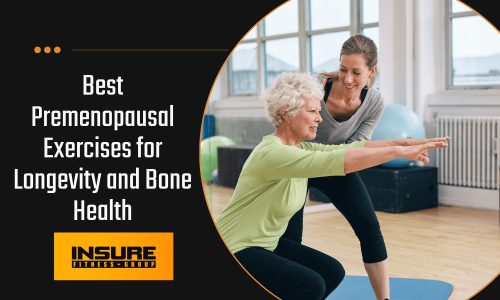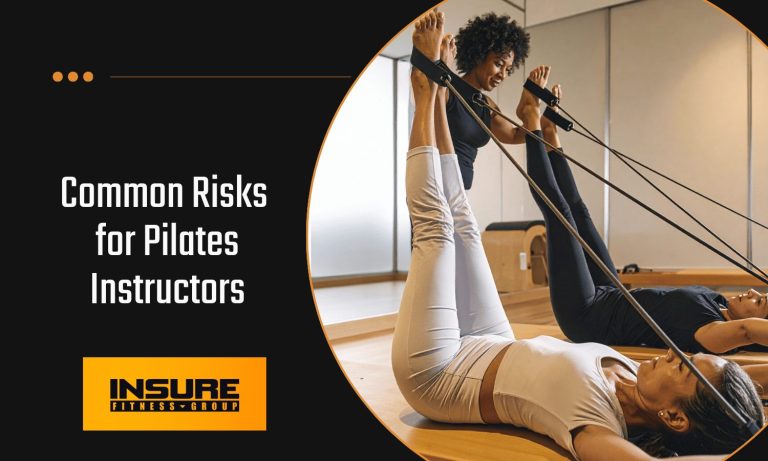The Premenopausal Power Window
The secret to graceful aging for women is hidden in plain sight, and you, as a fitness professional, hold the key to unlocking that door and helping your female clients through it. We see them in gyms worldwide – adult women in the middle of life, raising families and growing their careers while still trying to take care of themselves. These women are stronger than they realize, but often lack direction in their fitness goals. Their bones are strong, but the clock is ticking.
This stage in a woman’s life is called premenopause, and occurs between the growth of the teen years and the menopause that characterizes later years. It is considered a woman’s childbearing years when she still has regular periods and no symptoms of menopause. For many women, it’s the longest stage of life, spanning the decades between the 20’s and 40’s or even 50’s.
Despite the enormity of this population, these clients are often overlooked at gyms and fitness facilities, written off in favor of younger, more athletic clients. What many trainers don’t see is the exponential opportunity that lies in training these women. You can help them build healthy habits that can buffer the impending symptoms of menopause, and even transform the trajectory of their later years.
As they near and enter the stages of menopause, women begin to lose bone density more rapidly, leading to fractures and injuries that restrict their freedom. Premenopause is the time to maintain bone mass through regular exercise. When you coach women today, you’re training her for her future.
Strength First, Always
Strength training is the foundation for strong women, and every premenopausal woman needs it. Strength training is commonly excluded by women who are uncomfortable lifting around others or don’t know how to build a resistance training program.
Why It’s a Must
Trainers can help these women gain confidence in their abilities and teach them how to lift for strength today and bone strength tomorrow. Strength training also builds strength and endurance, which both decrease with age.
Focus on compound, weight-bearing movements to support bone density and muscular growth. Some clients may thrive on movements like squats, deadlifts, push-ups, and rows, while they may intimidate or seem offputting to others. Invite women to participate alongside other women as they learn these movements together. Help them feel strong and empowered, and they will be.
How To Do It
Aim for 2-3 strength training sessions per week per muscle group. Train your clients for core strength, joint health, and functional movement using strength training methods that work for your client. Start with bodyweight training or resistance bands to promote positive movement patterns. When the client is ready, move to suspension trainers or weights to increase the difficulty (and keep the benefits going).
We often think of progressive overload as a principle for athletes, but it applies to populations of all ages, and premenopausal women are no exception. Continuing to challenge muscles and build strength and skill will breathe new life into your clients’ daily routines. It can be easy to stagnate training for people who are in the middle of the scale – they’re not seniors prone to quick deterioration without movement, but don’t make fast progress like young people often do. Many of your clients may stay in this middle zone for years, decades, even. Regularly applying overload principles can tip that scale in their favor, letting them reclaim the years that are often lost to sedentary living and abandonment of selfcare.
In your individual training sessions, prioritize form over weight or reps. Keep your clients’ movements controlled, yet powerful. Vary intensities, speed, and other variables to continually challenge them and watch for changes that indicate they are ready for more or that a shift to a slower pace may be needed. Train your clients to build core strength for strong, injury-free living. Pair this with exercises for joint health and functional movement, and you’ll be part of the industry creating a generation of healthy women prepared for the next steps in their lives.
Lift Weights and Spirits: Whole-Body Movement That Sticks
For women (and really, everyone else too), strength training should be about more than just the physical gains. It’s about strengthening resolve, building confidence, and training our mentalities. We can do this be creating training programs and activities that complement our clients’ needs and desires. As a woman in this stage of life, I’ve felt this shift in my own training over the last few years. As I’ve watched my health and that of those around me change, I have realized the beauty of a thorough program, one that ebbs and flows with me through life’s changes, but always points me forward.
As we build strength training programs for women, add in opportunities to explore and try new things. Incorporate aerobic and balanced-based exercises to promote whole-body physical activity and health.
Top Exercises for Female Clients
A list of the top exercises for women would truly be as unique as each woman out there. We all have different likes and dislikes, different abilities, and different life stories and statuses that impact what exercise works. Having spent a large part of my career working with female clients, we tend to take two paths when exercising – we either like to go it alone or we drag friends along with us. As trainers, we can lean into those preferences. If your client enjoys the peace of exercising solo, encourage activities that they can safely do alone, such as weightlifting, running or walking, biking, or swimming. For those who enjoy a friend or two, offer activities such as tennis, racquetball, hiking, or small-group strength training. If your client thrives in a large group, invite them to participate in group fitness, yoga, or tai chi.
Most of these activities can easily cross over into solo or group endeavors, and can be adapted to your client’s abilities and preferences. Variety is key to keeping your clients moving. It keeps your clients motivated and your programs sustainable, driving more engagement, adherence, and ultimately, results.
Make the Most of Mind-Body Exercises
Beyond adding variety to your workouts, mind-body exercises can help relieve stress and encourage relaxation in a time of life that is often less than peaceful. For women, the premenopausal decades are busy, and at times, overwhelming. There is pressure to do and be everything, and not nearly enough encouragement to slow down and develop the habits that will determined the quality of life for years to come.
Mind-body exercises offer women the chance to reconnect or deepen the connection between their mind and body, between their mental and physical health. Adding in these elements doesn’t always mean taking a class, though it certainly can be. Mind-body exercise can be as simple as inviting your client to be more aware during a stretching session or performing a breathing exercise before a training season. Helping your clients recognize the mind-body connection and work with it teaches them to train smarter, not just harder.
Train Smarter For Lifetime Impact
How we train our clients today largely determines their habits tomorrow. In schools and sports, great emphasis is placed on helping children and teens develop good habits, but this teaching tends to stop as someone reaches adulthood. As a trainer or other fitness professional, it is your role to look at you client much the way a teacher or parent looks at a child, then help them identify behaviors and habits that will most benefit them. It helps you mitigate risk and create truly individualized programs for your clients.
How to Adjust for Risk and Individual Needs
The first place to look is in your initial visit with your client. Review her health history for a family history of osteoporosis, heart disease, or hormone-related conditions. Start working to mitigate her risk of developing these concerns by integrating exercises to help combat their onset. Be aware of how risks may affect her exercise and reduce them where possible.
In addition to watching for symptoms of chronic diseases, be mindful of the warning signs of the female athlete triad, including irregular periods, low energy, and fragile bones. Highlight healthy eating and exercising, and help clients avoid potentially damaging activities such as chronic dieting or extreme exercise volume. Much of what your client thinks about their body will come from you and your example. Use your words and actions to support healthy behaviors and instill confidence in your clients. Emphasize individualized programs based on:
Programming Tips for Long-Term Benefits
One of the most beneficial tips I learned early in my training career was to talk to clients about the “why” behind their exercise. It’s not always necessary to explain the methodology for each individual exercise, but a simple explanation can go a long way in improving performance of key exercises.
Functional movements should be a cornerstone of our planning and their placement in programs is more understood. Other less obvious exercises may require more explanation. I love drawing parallels between an exercise in the gym and the result it will have outside the gym. If your clients know why you’re asking them to do something (particualry if it’s a challenging exercise), they are more motivated to do it and do it well.
This advice especially applies to mobility work and core training, two key elements in an well-rounded, holistic exercise program. Show your clients that they work and you’ll be one step closer to committed clients.
Train Today for Success Tomorrow
Premenopausal women are in their most strategic training decade and now is the time to capitalize on it. This is the window to invest in the future of their bones, joints, and overall health. By building programs that include strength and functional training, boost aerobic capacity, and lean into balance and mobility training, you’re setting your clients up for success through the premenopausal decades and beyond. You’re preserving confidence and independence and building resilience and strength that will add much more than just days to their lives.
Want to protect your clients’ future health and your career? Make sure your liability insurance is as strong as your training plan.
Explore Insure Fitness Group’s tailored coverage plans for certified personal trainers, including specialties in women’s health, functional movement, and strength training.
Train smart. Stay covered. Thrive together.





